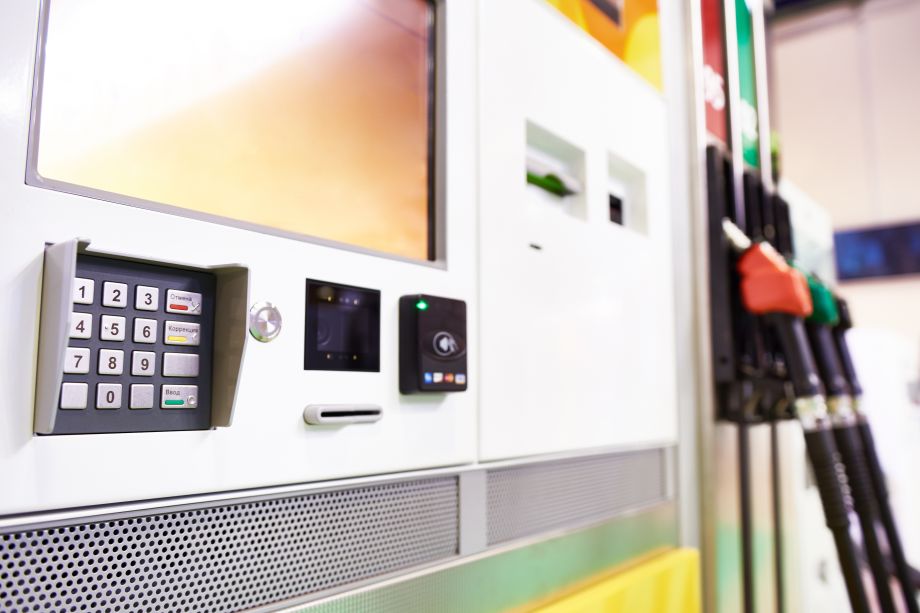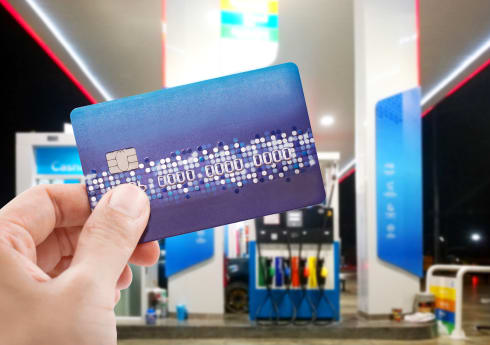How to Choose a Fuel Card: Top Tips to Help You Decide
Fuel is one of the biggest expenses for many businesses in the UK. Fuel cards can help bring costs down and save you time on paperwork. But to get the most benefit from them, you need to choose a fuel card that suits your business.

How to choose a fuel card
When choosing fuel cards, consider your requirements and what type of card would best match your needs. Going through the details, whether you have a fleet of vehicles or just one van, can be complicated. So, we’ve broken it all down into eight top tips.
1. Know what cards you can use and where
Fuel cards can only be used within the provider’s network. They can’t be used everywhere, so you need to choose a card that fits your routes.
For example, if you’re regularly on the motorway, a Shell or BP fuel card may work best for you. You can select what stations you regularly use on our fuel card comparison to find options that will work best for you.
However, not everyone is lucky enough to know what routes they’ll be using all the time. Many fuel cards for sole traders and other companies instead need a good regional network to match their needs.
Before you buy a fuel card, check where it can be used and see if those stations match what you regularly use or are available in your area.
2. See if you can get any fuel price discounts
Many fuel cards in the UK offer discounted prices within their station network. This is usually around a few pence a litre but can be up to 10p a litre with the Fleetone fuel card from UK Fuels (depending on where you use it).
According to a 2021 analysis from Reducer, businesses in the UK could save an average of £1,505 a year by using fuel cards. How much you’ll save does vary depending on your business, how much fuel you buy and what discounts are available.
Using discounts can save your business significant amounts over time, particularly if you have a fleet of vehicles.
3. Check for any fees
Some fuel cards will charge you extra if you request paper invoices or miss a payment. Read the small print and see what you might have to pay in fees in some situations.
Many fuel cards also charge a small annual fee—a sort of membership charge. How much this costs does vary depending on the card and provider.
Depending on your budget and business type, cheap fuel cards may be just what you need.
4. Talk to your drivers
Fleet managers and businesses will need clear communication about how to use fuel cards appropriately. Ask your drivers if they have any fuel card preferences or issues to be addressed.
Drivers may need clarification on how the cards work and the benefits of them. Once you let your drivers know they no longer need to spend time filing any claims for fuel or wasting time on paperwork, they’ll be onboard.
5. Select your purchase controls
Some fuel cards can also be used to buy vehicle lubricants, car washes, toll charges and AdBlue. Depending on what you need and want to claim as a business expense, you can let drivers purchase these things as well as fuel with the cards.
If you want to buy more than fuel with your card, you can usually select and deselect this function from your online account. Having this option isn’t always available, so double-check before you get your card if this kind of cash flow control would be useful for you.
6. Look into a range of card providers
The biggest fuel card provider names get the most attention, but smaller providers and lesser-known fuel cards may suit your business better depending on what you need. It’s best to compare many providers and cards, so you don’t miss out on any offers.
7. Get a fuel card for your vehicle type
Selecting a card designed for a different kind of vehicle could leave you without a suitable network of stations and fewer discount prices. Find fuel cards that allow your drivers to refill where they need to.
Some cards work better for HGVs, vans or cars. An HGV business will need fuel cards accepted at truck stops, while a fleet of LGVs can benefit from a wider network and more choices of stations.
8. Make sure you receive HMRC-compliant invoices
While discounts on fuel prices are nice, getting invoices online can offer your business even more benefits. Instead of collecting paper receipts that can be easily lost and difficult to file, paperless invoices can be used for fast and easy VAT reclaims.
Use fuel cards that offer HMRC-approved invoices. These should be sent to your online account, email address or both for easy access.
From there, you can include them when you file your taxes and VAT reclaims. Whether you’re a sole trader or fleet manager, using this method to file your claims can save you time and simplify your paperwork.
We’ll help you choose a fuel card
Choosing a fuel card isn’t an easy process. The benefits of using the cards can be great, but getting the wrong type can lead to inconvenience, delays and a network that doesn’t match your needs.
Our database of cards covers 95% of UK fuel stations. Find out what the best card is for you by using our fuel card comparison tool.
Simply enter the type and number of vehicles your company uses, select the stations you use and we will provide you with a list of the cards that give you what you need. All you have to do is choose from our top picks.



